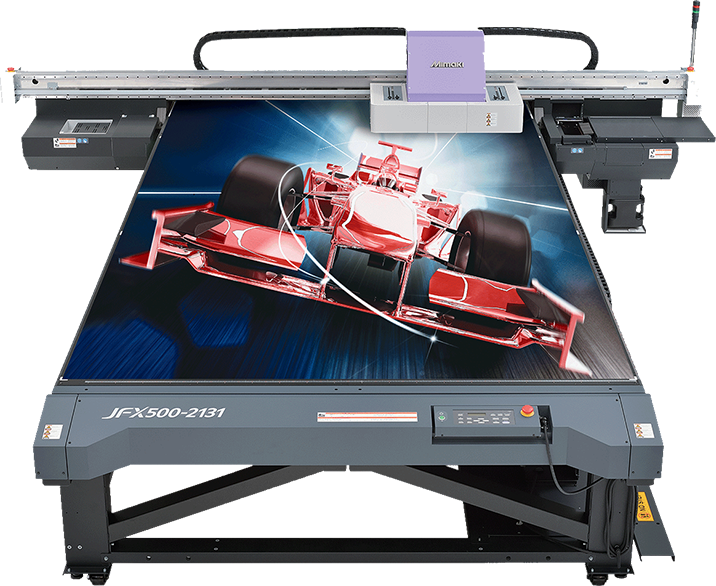UV PRINTING WITH MIMAKI JFX500-2131 FLATBED PRINTER
With UV printing, there is no need to print onto film and mount the film on a base. Printing can be done at high speed, while adhering to all quality standards and remaining environmentally friendly as well as being practically odourless. Compared to traditional printers, the solutions offered by UV printers are novel and more versatile, and allow printing directly onto various materials.
UV printing is a form of digital printing that uses ultraviolet radiation – UV lights – to cure ink. In newer generation printers, this is achieved through LED technology. The entire process from inserting the ink into the printer to drying it on the substrate is carefully controlled by the printer. The choice of materials suitable for UV printing is practically limitless. Suitable materials include acrylic, PVC, KAPA, metal, wood, glass, etc. The printer can handle materials with dimensions of up to 3100x2100x50 mm. These dimensions enable us to print directly onto large substrates that have previously seemed infeasible. If a material should prove demanding towards the ink, the substrate is treated with a special substance called a primer. The printer uses the classic CMYK colour model and can also use white ink as an additional option. This option provides a brilliant outcome even on multi-coloured substrates.
The quality we can offer largely depends on the specific work file and the desired solution. At higher speeds, even a resolution of 300×450 dpi will yield an excellent result, but where it needs to be especially fine the printer can also print using a resolution of 1200×1200 dpi – this is slower, but will provide optimal quality. The fields and solutions where UV printing can be used are extremely widespread. Although advertising remains its main application, UV printing is also being used increasingly in interior design, for example. This includes wall panels, doors, glass kitchen splashbacks, etc. Therefore, if you have a baseplate you would like to decorate with a quality text or photo print, UV printing is the ideal solution for you. If all this seems too good to be true, do not hesitate to contact us for further details.
GET A QUOTE